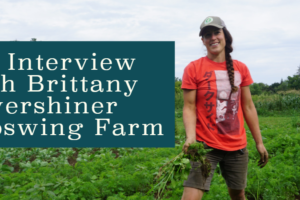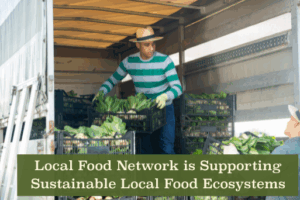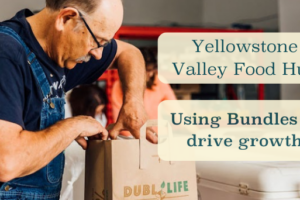 Are you looking for ways to sell more produce to restaurants? As a local farmer or food hub, it can be hard to convince restaurants to buy fruits and vegetables (not to mention meat, dairy, eggs, herbs, prepared products, or anything else) from you rather than regional or national distributors.
Are you looking for ways to sell more produce to restaurants? As a local farmer or food hub, it can be hard to convince restaurants to buy fruits and vegetables (not to mention meat, dairy, eggs, herbs, prepared products, or anything else) from you rather than regional or national distributors.
However, as interest in local food increases and chefs look to use fresher and more creative ingredients to entice diners, there are plenty of opportunities to start selling (or to increase your sales!) to eateries in your community.
We’ve updated our free guide, Selling to Restaurants: A Guide for Farms and Food Hubs, to help you learn how you can sell more produce to restaurants. The resource booklet is jam-packed with all-new suggestions for working with chefs, restaurant owners, and other buyers. Download it today for ideas, tips, and so much more!
Among the helpful things you’ll learn:
🌮 How working with restaurants has changed in the past few years.
🍴 What types of restaurants to approach — you’ll be pleasantly surprised to learn that our experts recommend many options beyond farm-to-table restaurants!
🍱 Why it’s important to understand your unique value proposition before you start approaching restaurants.
🌮 How to effectively research which restaurants might be the best partners for you.
🍴 Important do’s and don’ts for working with chefs, restaurant owners, and staff.
🍱 Creative ideas for using AI to boost your restaurant sales!
Download the updated version of “Selling to Restaurants: A Guide for Farms and Food Hubs” today!
Download the Guide
Meet Our Experts
 William Crenshaw, Greener Roots Farm
William Crenshaw, Greener Roots Farm
Greener Roots Farm, an LFM customer since 2018, was founded in 2012 as Nashville’s first commercial-scale hydroponic vertical farm. It grows leafy greens, microgreens, and herbs year-round in its state-of-the-art greenhouses. Greener Roots Farm sells to restaurants, retailers, and other wholesale accounts in Nashville and Atlanta.
Our sweet spot is high-end restaurants, but it’s also the mid-tier restaurateur who has a good following and a reasonably priced, authentic meal who is looking for fresh, local goods. They know the value they derive from the price they pay is much higher for this type of product.”
—William Crenshaw, Greener Roots Farm
 Anna Ware, GrowFood Carolina
Anna Ware, GrowFood Carolina
GrowFood Carolina’s mission to tap into the existing assets of small-scale agriculture to help create a stronger rural economy, spur job creation, and build capacity in rural communities by connecting farm businesses to the thriving local food movement. The food hub partners with more than 85 farmers from around the region who provide a range of products including produce, dairy, eggs, grains, and pantry items. An LFM customer since 2017, GrowFood Carolina has served a diverse base of wholesale customers since 2011.
A lot of restaurants are planning by the quarter, so chefs may want to know what’s coming in three months. Be prepared with that information when you go to visit them.”
— Anna Ware, GrowFood Carolina
 Oliver Gubenko, Harvest Drop
Oliver Gubenko, Harvest Drop
Harvest Drop aggregates food from over 120 local farms in New Jersey, New York, and Pennsylvania for wholesale and retail accounts throughout the region. The company carries a diverse range of products including fruits, vegetables, foraged foods, flowers, meat, cheese, eggs, and flours and grains. Harvest Drop was established in 2015 and has been using LFM since 2017.
Mobile communication is probably the best way to get in touch with chefs. Half of their time is spent working behind the line, so they’re not able to pick up a phone call and often won’t see their emails.”
—Oliver Gubenko, Harvest Drop
Download Our Guide to Learn How to Sell More Produce to Restaurants
Ready to reap the many benefits of working with restaurants — including predictable sales, bigger orders, and greater awareness for your farm and food hub in your community? Download the updated version of “Selling to Restaurants: A Guide for Farms and Food Hubs“ today.




